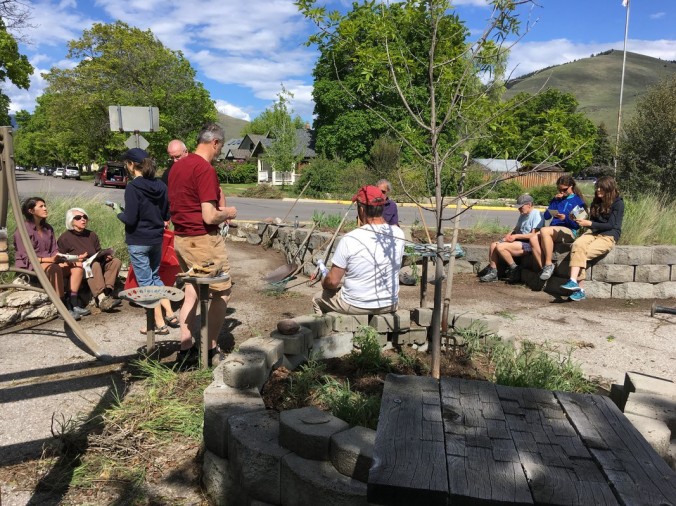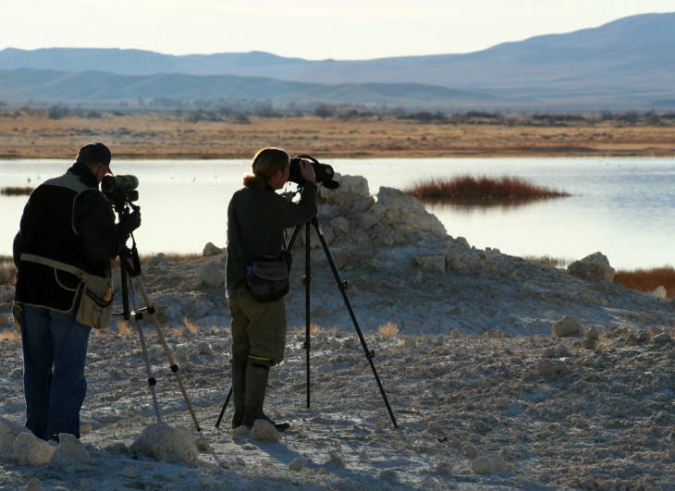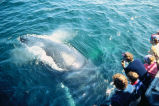There are numerous ways you can learn more about and help protect endangered species and their habitats. Even though most of these everyday actions can be done during the “social distancing” environment of the COVID-19 crisis, you may need to delay a few of them until we return to “normal.” Also, be sure to visit the For Teachers and For Young People pages of this site.
1) Learn about threatened and endangered species, including the wildlife, birds, fish and plants living near you. For more information about specific endangered species, visit endangered.fws.gov
2) Create a backyard wildlife habitat. In addition to the appropriate plants and trees (check with your local Native Plant Society for suggestions), add bird feeders and houses, bird baths, bat boxes, shelter areas and other things that attract wildlife. Have the National Wildlife Federation certify your garden. Go to http://www.nwf.org/Garden-for-Wildlife/Certify
3) Plant a pollinator garden with native vegetation. Native plants provide food and shelter for native wildlife. Attracting bees and butterflies can help pollinate your plants. Avoid planting invasive species, which can overtake and destroy native species on which animals depend.

4) Substantially reduce (or eliminate) the use of herbicides and pesticides, which are hazardous pollutants that can affect wildlife. Also reduce use of fertilizer. Excess fertilizer can wash into streams and rivers and cause amphibian deformities and deaths.
5) Reduce the consumption of water in your home and garden, giving animals that live in or near water a better chance of survival.
6) Don’t dump paint, oil or antifreeze or other chemicals, which will pollute the water and can harm people and wildlife.
7) Participate in a Citizen Science activity that focuses on conservation. Examples include Condor Watch, Backyard Bird Count, Monarch Health, Habitat Network and Ladybug Project. Go to http://www.citizenscience.gov for information.
Also, assist with the Audubon Society’s annual bird count. (Visit http://www.audubon.org)

8) Drive cautiously. Many animals live in developed places and thus must travel through areas with human hazards. Watch for animals when you’re driving.
9) Don’t leave food or trash behind as it can attract wildlife to the roadside, pull-out areas and campgrounds.
10) Survey the products you typically use in/around the home. Purchase those that can be recycled and avoid use of plastic straws, bags and other materials that are harmful to the environment/species.
11) Don’t litter/otherwise destroy sensitive habitats, which may be home to native/visiting species that are endangered or threatened.
12) Take photos of wildflowers instead of picking them.

13) Organize and/or participate in a “clean up” campaign of an important local habitat, such as a beach, lake, stream, or mountain area. (Be sure to work with appropriate city officials/environmental organizations.) A few tips from REI at: https://www.rei.com/blog/stewardship/tips-for-hosting-your-own-cleanup
14) Don’t purchase products made from endangered species like ivory, coral and tortoise shell.
15) Avoid releasing helium balloons into the air during weddings, birthdays and other outdoor celebrations. Balloons can travel hundreds (or more) miles and later be ingested by turtles, birds, dolphins, seals and whales.
16) If you observe harassment of threatened and endangered species, be sure to report it. You can find a list of state wildlife departments at http://www.fws.gov/offices/statelinks.html
17) Participate in the annual BioBlitz (“focuses on finding and identifying as many species as possible in a specific area over a short period of time”). Learn more at http://www.nationalgeographic.org/encyclopedia/bioblitz/ and National Audubon Society and other environmental organizations.
18) Visit a national wildlife refuge, park or other open space. These protected lands provide habitat to many native wildlife, birds, fish and plants. To find a wildlife refuge near you, visit http://www.fws.gov/refuges/ To find a park near you, visit http://www.nps.gov

19) Volunteer as a docent/guide or other position at a park, refuge, recognized animal rehab facility or other location.
20) Join an environmental organization that supports endangered species conservation initiatives.
21) When vacationing, be sure to only take wildlife excursions (such as whale watching trips) that are careful to protect the species and the local environment. Look for ones that are led or accompanied by biologists or oceanographers.

22) Voice Your Opinion. Write a letter to your local newspaper urging support of important species protection measures. E-mail your Congressional representatives asking them to support the Endangered Species Act. Attend city council or other group meetings that address local environmental issues and
23) Join others in the annual Stop Extinction Challenge that is organized by the Endangered Species Coalition (usually in August).
24) Get a close-up look at rare/threatened plants by visiting an arboretum, botanical garden or other public garden area. See http://www.publicgardens.org/about-public-gardens/gardens for various locations.
25) Add the iNaturalist app to your mobile devices and record/share your observations of nature. (www.inaturalist.org).
26) Give up eating meat for a day or more.
27) Participate in Ride Your Bicycle to Work Day.
28) Volunteer as a participant in National Trails Day, National Public Lands Day, Endangered Species Day, International Migratory Bird Day and other events.
29) Create a map of your state and identify the threatened and endangered species in your region, then hang it in your den or other location.
30) Keep a journal of your various endangered species conservation activities.
31) Avoid consuming fish/ocean species that are listed as rare/threatened/endangered.
32) Make some of your conservation activities family projects.
(Source: Endangered Species Coalition, National Audubon Society, National Wildlife Federation and Other)